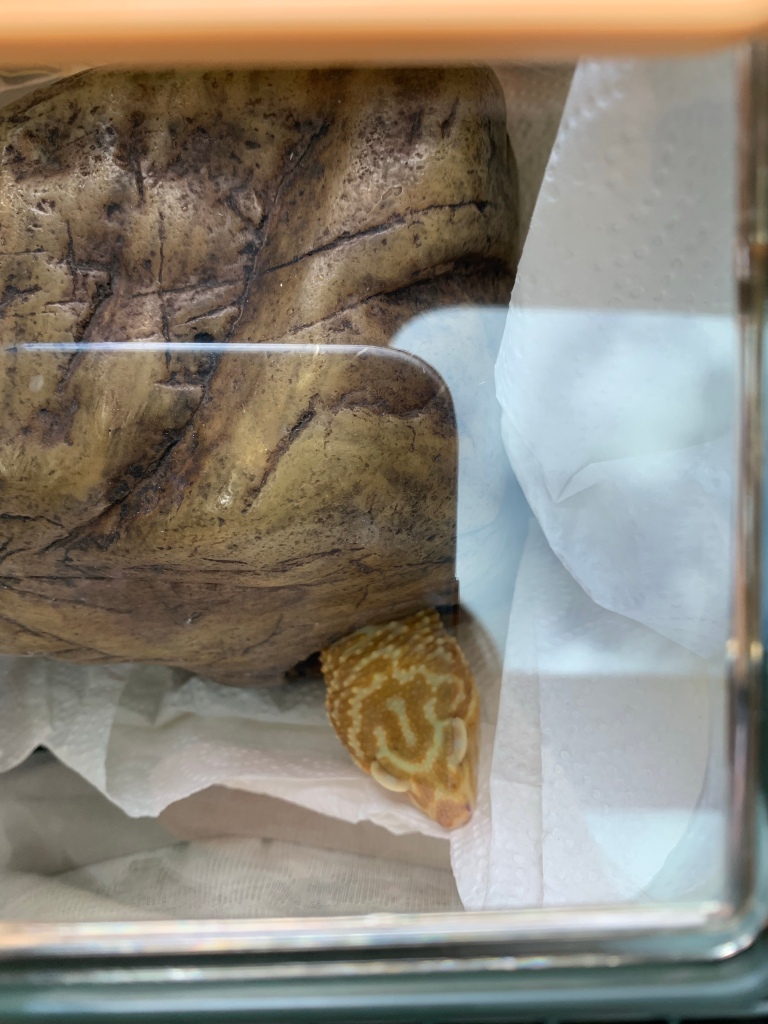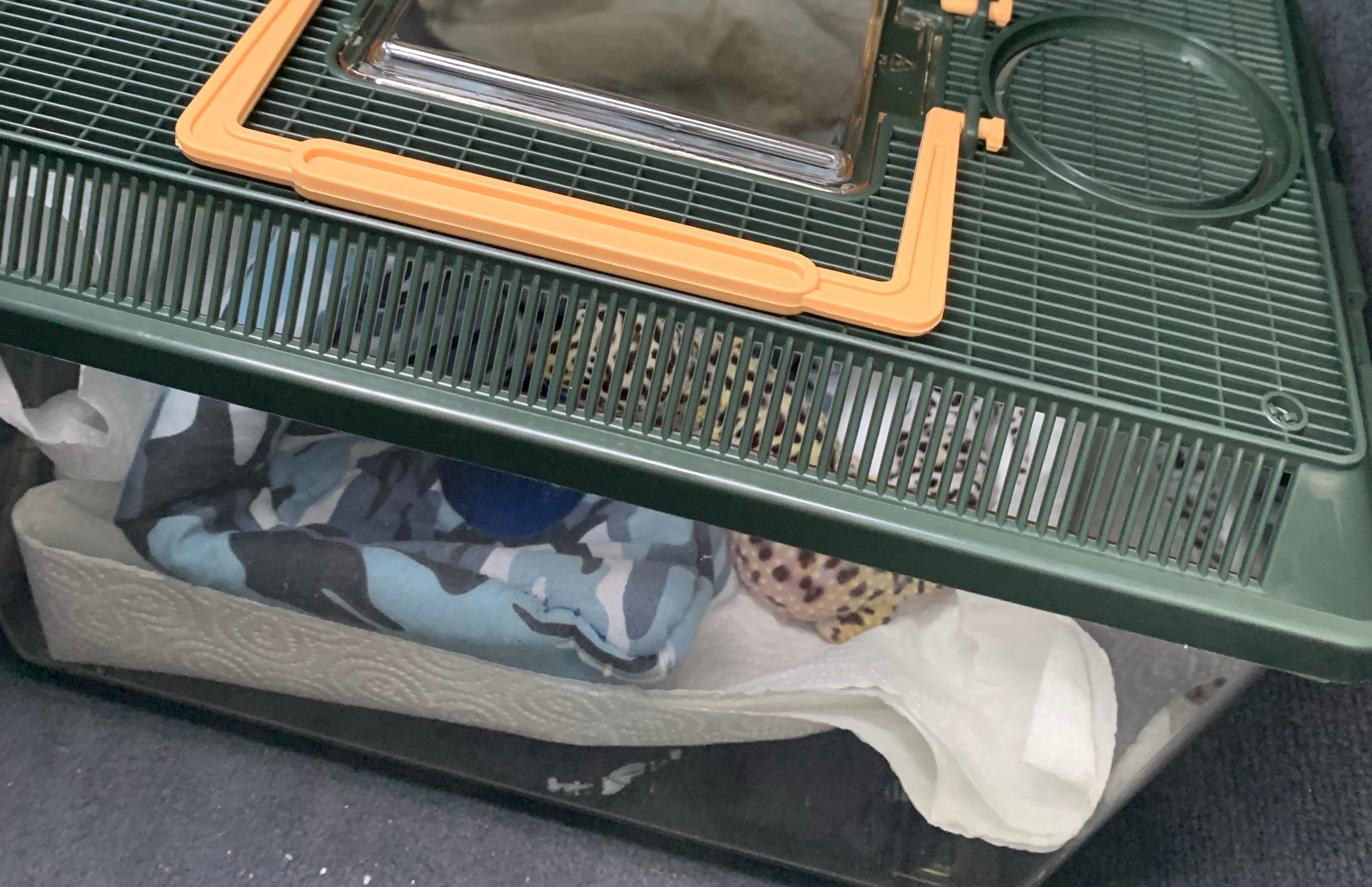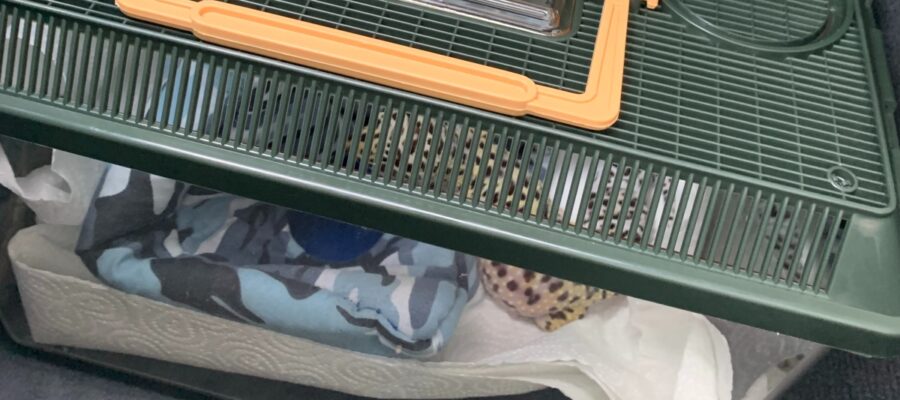Last month my leopard geckos moved house – I needed to transport them for over 4 hours across the country and I was apprehensive, but everything went perfectly so I’m going to share my experience and I hope this may help someone else if they need to transport their geckos anywhere.
Leopard geckos can easily be stressed out – I think my biggest worry was if the stress of them being moved around would cause them to drop their tails or something, as they have been living in the same room for their entire lives.

I did everything to mitigate this risk and to make it as comfortable for them as possible. I knew it wouldn’t be feasible to transport them within their vivariums – they are far too big, and the geckos and all their hides would slide around and potentially get crushed. I was also worried about the temperature. It’s been hot this summer in the UK, therefore I would be travelling in an air conditioned vehicle, and I didn’t want the geckos to be too cold.
The first thing I purchased were two faunariums – I chose these by Exo Terra which were perfect for my adult geckos. I bought them a faunarium each – I do not cohabit my leopard geckos on a daily basis, so I would also not risk confining them in the same space for transportation even though it was only for a few hours. See: Is it safe to cohabit leopard geckos?
I also used quite a lot of paper towels to pad the inside of the faunarium to stop the geckos sliding too much and to insulate them, and then once they were in my car footwell I placed items at either side of the faunariums to prevent the faunariums moving around when I drove around corners.

Secondly, I needed a portable heat source, so I purchased some small hand warmers – you just snap the metal in them and they’ll stay warm for around an hour, and then you can just snap another and replace the old one once it’s gone cold. They’re reusable too, so make sure you don’t throw them away! These can be placed under the kitchen towel at the very bottom of the faunarium and will provide a little under-belly warmth for the geckos.
I decided to use my reptile tent for my female geckos’ journey to give her shelter – she was more than happy to let me take her out of her hide in the middle of the day and place her in the faunarium.
Another alternative would be to make some shelter for them using paper towels so they have something to hide in and stop them feeling too exposed.
However I wasn’t so lucky with my male gecko – he refused to come out of his moist hide so rather than give him unnecessary stress, I just took his moist hide and placed it directly in the faunarium for transportation.

This hide comes in two pieces, so I sellotaped the top and bottom together and made sure I padded around it with plenty of kitchen towel to stop it sliding around or coming apart.
I stopped a few times at service stations to check that they were ok, which they were. Once they were set up in their new home, I was fully prepared for them to stop eating due to a change in environment (see: Why isn’t my leopard gecko eating?) but fortunately their appetite didn’t seem affected and they have settled in very nicely.
Overall this was much easier than I imagined – like I said, I was worrying about having to do this but thankfully it was straightforward and my geckos showed absolutely no signs distress so I am a very happy gecko mother.
Shopping list for transporting your geckos:
Gecko Tent – optional!
Do you have any tips for transporting geckos? Have you ever had to do this? Let me know in the comments below!




